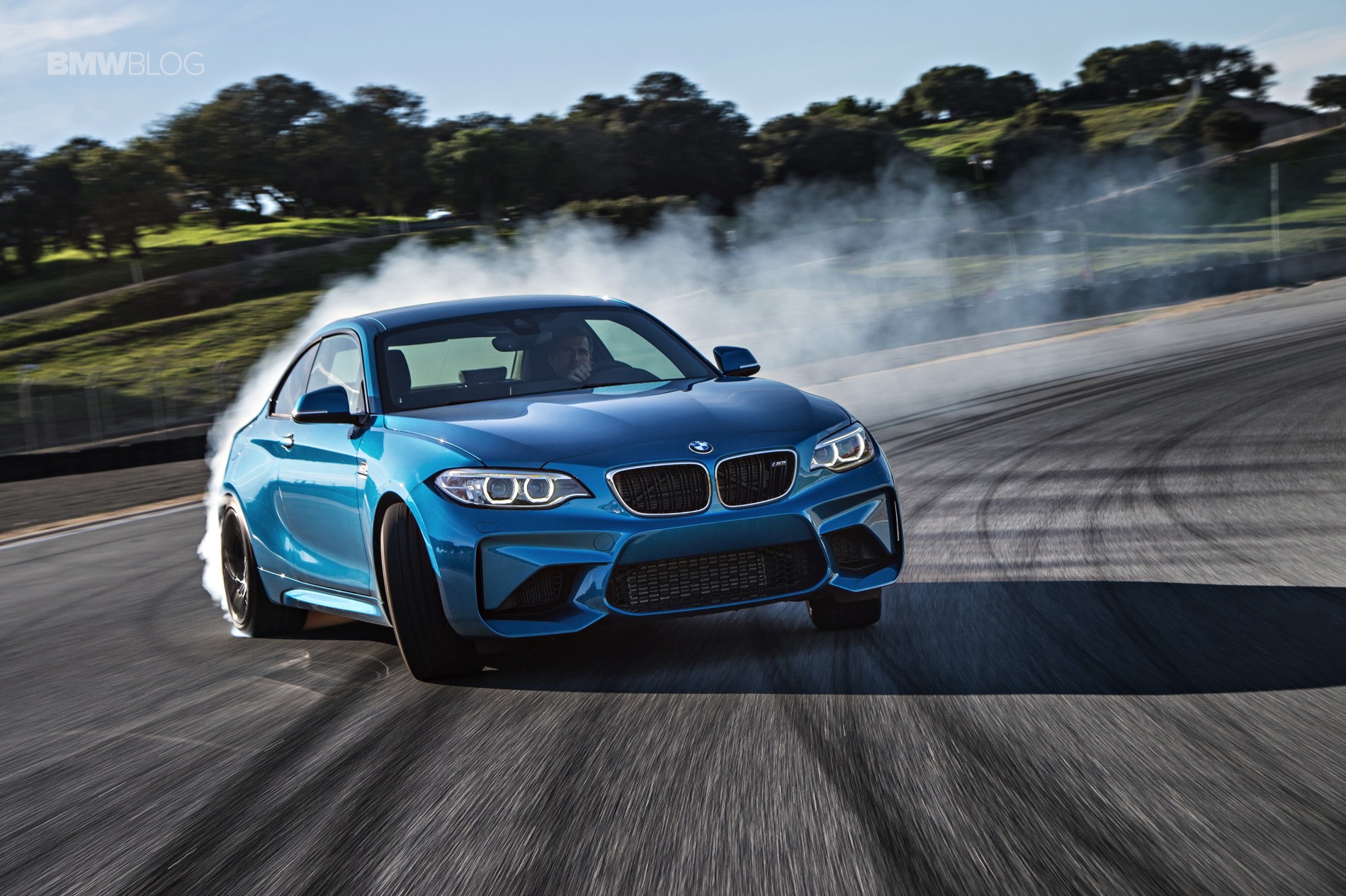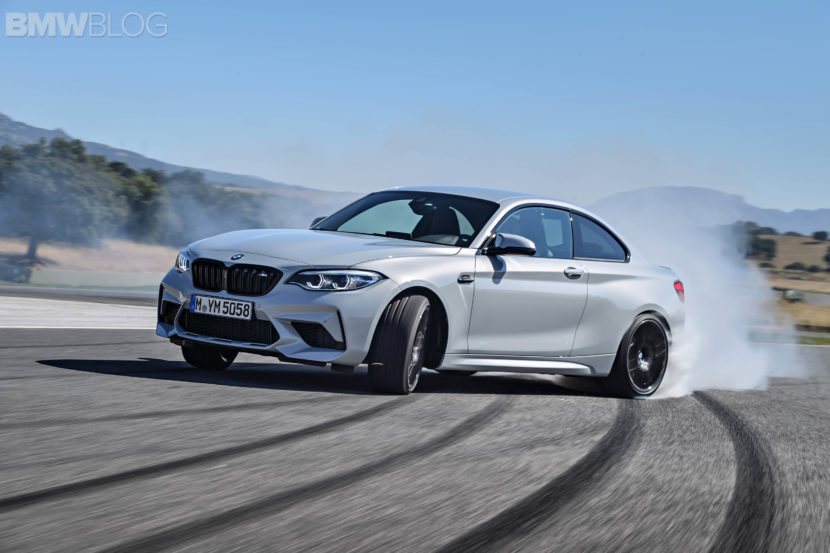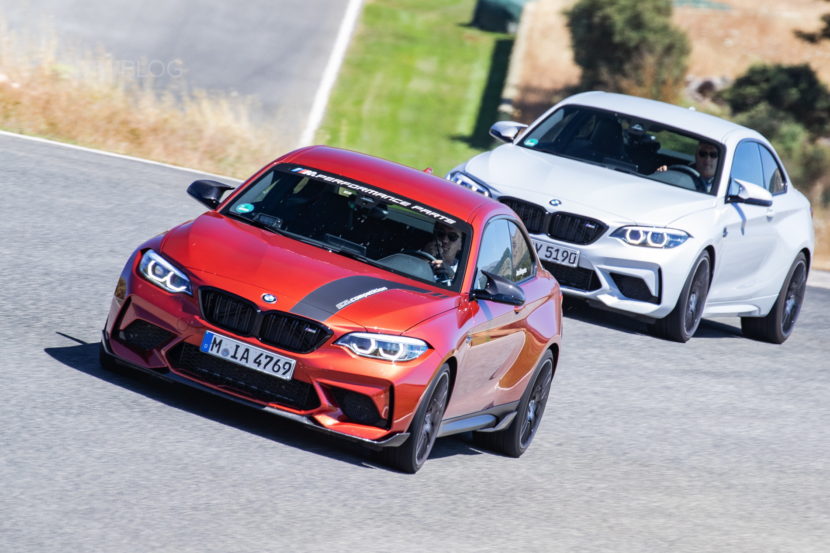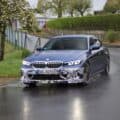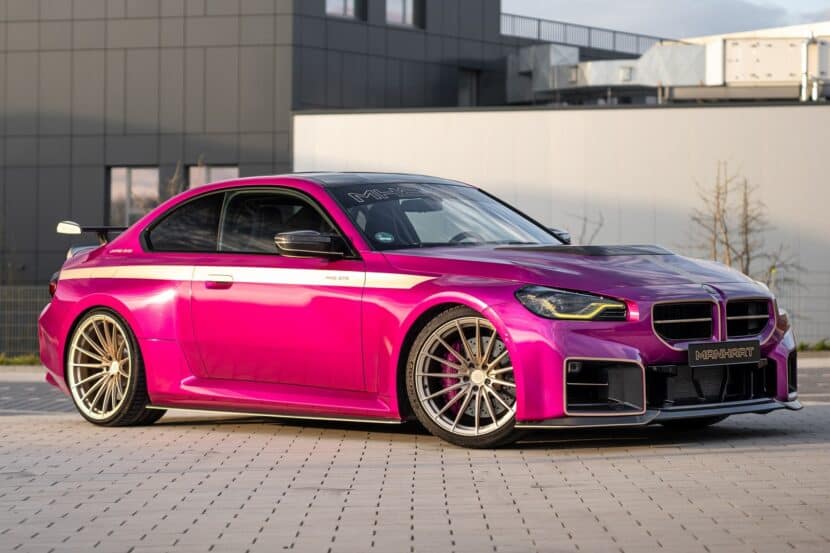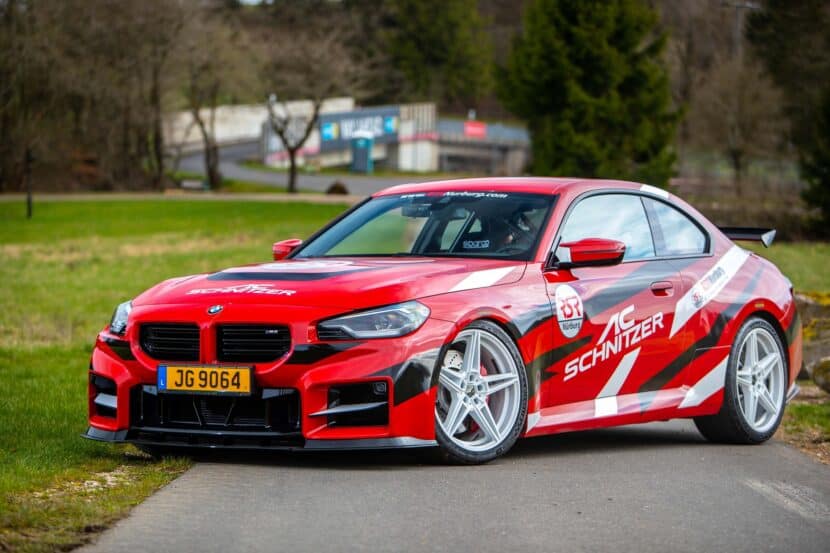You’re probably wondering why this comparison is fair. Prior to my BMW M2 Competition, I owned a heavily modified 135i for a little over a year and a half, powered by the same power plant, with uprated wheels, suspension, and tires, and exhaust. Same engine- the now ubiquitous N55- with M comparable upgrades. Furthermore, I’ve also drag raced the N55-powered M2 Coupe against an M4 Coupe with the very same engine found in the M2 Competition. While I didn’t have a chance to race the the two M2s – pun intended – back-to-back, I do have some experience with both cars.
Power
The BMW M2 Competition is faster. Always. All instances of the vehicles I drove were DCT (dual-clutch), except my M2C which is a manual. I had no fears in my modified 135i – the N55 engine responds enthusiastically to modifications and easily makes 400 wheel horsepower. The DCT, the same unit that the non-Competition M2 received, shifts fast and without a thought or wish for tomorrow. Instantaneous upshifts, crisp downshifts that responded just as quick as the current ZF 8 speed auto BMW has opted for in current M cars.
The “regular” M2 powered by the same engine, honestly, felt very similar to my 135i. Overboost was good for well over 350hp and the car never felt wanting for power. Occasional fast food pickup runs became a blast, because I had a badass, widebody 2 Series making way too much power for the chassis. I drove that car more than I had to.
Obviously, it’s a problem when the “M” version of an otherwise pedestrian 2 Series feels too similar to the base model, or indeed in this case, the last year’s model. The S55 engine in the M2C roars to life every morning with an aggravated, hung-over, “what are you doing”, but coyly cheers you on as you warm it up. It basically begs you to rev it to 8,000 (redline is about 400rpm before there). And it starts making sense as you approach redline – something the N55 in the original M2 lacks. Peak torque on that certifiably non-M, non-bespoke engine tops out before 6,000 rpm, and that can’t top the race car feel and added power from the S55 in the M2C, despite the apparently “Weed Eater” influenced sound.
Steering Feel
The based BMW M2 is good. The M2C is better. But 135i is king. The 135i Coupe was one of the last BMWs to receive a true hydraulic steering unit. While my M2C comes very close to replicating that feel with a few choice modifications, it still can’t hang with the level of connectivity that hydraulic steering grants. The normal M2 has the critical advantage of being very light (the one I extensively drove was a first year model, a “stripper” if you will – limited AC and other options), but that doesn’t transfer to what you feel in the driver’s seat.
You feel it in the oversteer – more on that later – but carving the curvy canyons simply feels better in the 135i’s basic steering rack. The M2C embodies the “middle child” – Sport+ gives you great feedback with limited numbness, but still falls short of a true “connected” experience. I did things in that 135i that, frankly, were magical. Every left turn became an event, and every sweeper corner became a concerto of tire squeal, inline-six roar, and turbo woosh. Nothing will, or can compare.
Braking and Additional Dynamics
So, the M2C wins. No clickbait here. It factually stops better, faster, and with less drama than any counterpart here does. However, there is a small caveat: what if you are not driving spiritedly or tracking the car? Maybe you just want to beat your neighbor’s fake AMG (I’m looking at you, C 43) to the stop light. Well, you probably want the non-Competition M2.
M2C (in America, anyway – it’s an option literally everywhere else) gets massive brakes adapted from the previous generation M5 (that’s a fact – same as the carbon ceramics equipped to the current F80 M3 and F82 M4 cars), which is fantastic! Unless your daily commute doesn’t include a hard brake from 120mph. Or maybe you occasionally just drive in traffic. Or routinely drive the speed limit. Which, realistically, is 50-75% of the ownership demographic.
In the majority, you’ll find the M2C’s squeaky, grabby brakes annoying. Should you choose to get some heat into them and drive (gasp!) a little over the speed limit, you’ll find a predictable, silent stopping power that beats anything in its class. Look it up if you don’t believe me, Google is right there. The normal M2 stops pretty okay, and actually beat the M4 I was drag racing (actually, factually, on Circuit of the Americas) in a start/stop competition.
You see, BMW doesn’t believe in quarter/half mile events and instead insists on benchmarking their cars via “quarter mile + brake box” tests, which are exactly what they sound like. Brake in the box for a win – pass it, you lose. In almost every race, I won because I picked the M2 and knew its smaller wheelbase and lighter weight would stop it quicker than the testosterone-fueled, “something-to-prove”, M4. I upgraded the brakes on my 135i, and frankly am not sure how it compares to the stock example of either M car – but I know the stock brakes were bad enough to demand an upgrade after some spirited canyon drives.
So where does that leave us?

The M2C is objectively the best car, right? Well, I haven’t told you the downsides. It’s the heaviest, by at least 50-100 lbs. It loses the analog feeling of the original M2. It doesn’t have the hydraulic steering of the 135i (or indeed, 1M coupe). It’s a tinny sounding, over-braked and overweight, lip-service pièce de ré·sistance to the “true M car enthusiast”. But, you can still get a manual. Which is great. But is it truly the car that most lives up to the “Ultimate Driving Machine”?
Spoiler alert: BMW no longer is chained to the “Ultimate Driving Machine” tagline. Now it’s “Sheer Driving Pleasure.” The 135i gives us some fantastic (literally unmatched; nothing will compare to the hydraulic steering/M suspension combination of yore) driving dynamics, but it will lose a drag race and stop slower. The M2C will beat every car here in at least one aspect; and that leaves us with the awkward stepchild of the N55-powered M2.
It’s balanced and still has Bluetooth; the steering feels snappy and it doesn’t feel heavy in the turns. But the only real M car here is the M2C. We get upgraded suspension, a true M motor, and brakes the size of dinner plates. True to the initial intention, we do have a car equipped to drive to the track, lay down some hot laps, and drive back without missing a beat.
Yeah, there’s a tow hook and a screwdriver that suffices as a “tool kit”. It’s kind of cheating its naturally aspirated predecessors with two honking turbochargers. Furthermore, it has nearly 16” brake rotors borrowed from a car twice its size that are either hugely unnecessary or completely essential (I’m not sure which is more indicting).
But there’s a reason I bought one, even after having somewhat extended seat time in the others; what might be the last true M car walks among us, still today – and it’s the M2 Competition.


